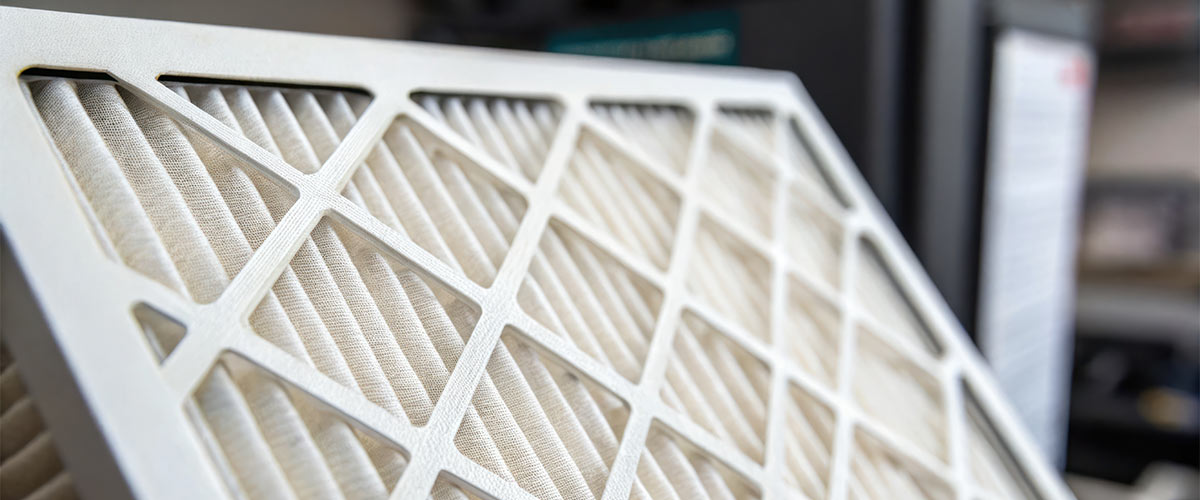You’re not imagining the extra dust on the coffee table or the scratch in your throat when the system kicks on. I’ve walked into homes where the blower starts with that soft whoof and a little puff of dust lifts in the sunlight, and folks say, “But I changed the filter!” Not all air filters do the same job, and the number on the package—MERV—actually matters. Pick too low and dust, pollen, and dander slip right through. Pick too high for your setup and the furnace or AC strains, runs longer, and your energy bills creep up. Let’s get MERV ratings explained so you can breathe easier without beating up your HVAC.
Understanding MERV Ratings
MERV stands for Minimum Efficiency Reporting Value. A MERV rating chart, ranging from 1 to 16, tells you how well a filter captures particles of different sizes. Lower numbers (1–4) catch big stuff—think lint and hair. Mid-range (5–8) grabs common household dust, most pollen, and some mold spores. Higher (9–12) catches finer particles, such as fine dust and pet dander. MERV 13–16 moves into very fine particles, even some smoke and bacteria-sized bits. Sounds like “higher is better,” right? Mostly, but your system has to breathe. As filtration becomes tighter, airflow can decrease if the filter has insufficient surface area or the ductwork is already restrictive. That leads to longer run times, noisy returns that whistle, cold or hot spots, and sometimes sweaty supply vents or a faint “hot electronics” smell from an overworked blower. The trick is matching the MERV rating to your equipment and home conditions.
How to Determine the Right MERV Rating for Your System
First, check the filter size and fit. Hold the new filter up to the return grille and ensure it slides in snugly—no gaps should be visible where air can escape. The arrow on the frame should point toward the blower. If you see a dusty outline around the frame, air’s bypassing the filter; add a thin gasket of weatherstrip or replace a bent filter rack door.
Next, adjust your MERV rating as needed. If you’re using MERV 5 and still sneezing, try moving up to MERV 8. Listen for the blower to start: if the return grille rattles or whistles, that’s a sign of strain or leaks. Some faint hiss is normal. It’s the sharp, flute-like whistle or a thump when the fan starts that spells trouble.
Switch your thermostat fan to “circulate” or run the fan for 15–30 minutes every hour on days with heavy dust or pollen. That gives the filter more time to work without constantly overwhelming your system. Vacuum the return grille; matted fuzz there is like putting a sweater over your mouth. If you have multiple returns, open them all. A quick tissue test works: hold a tissue at the grille. It should pull flat and steady, not flap wildly or fall off—that suggests poor airflow or a leak.
Filter Replacement: How MERV Ratings Affect the Schedule
Set a MERV rating schedule, not a guess. For most homes with a 1-inch filter: MERV 5–8 every 60–90 days, MERV 9–12 every 45–60 days, and MERV 13 monthly during high dust or pollen season. House full of pets or a woodworking hobby? Cut those intervals in half. I mark the install date with a Sharpie on the filter edge and set a phone reminder; it saves me from the “oops” moment when the old one comes out gray and sagging.
Buy filters in bulk so you don’t have to settle for whatever is left at the store. Keep returns clean: a quick pass with the vacuum brush knocks back the felt-like mat that builds up. Seal obvious air leaks at the return plenum or filter slot with foil tape. Avoid duct tape, which dries out and peels. Keep at least a couple of supply registers open in each room; shutting too many raises static pressure and defeats the point of higher MERV ratings.
Mind the dust sources. During spring, that yellow-green pine pollen coats everything here and rides right in on shoes and screen doors. Wipe entry mats, run the range hood when cooking, and keep the dryer vent clear. A clean evaporator coil and blower wheel also help; dirty coils act like a hidden filter, starving airflow before it ever reaches your actual filter. Regular maintenance keeps your system running efficiently.
When To Call the Professionals
Call a pro if a higher-MERV filter causes short cycling, reduced airflow at registers, or odd noises at the return. If your coil ices up, your heat pump runs forever, or your utility bill jumps after a filter change, something’s off. A technician can measure static pressure with a manometer, check blower speed, and see if your ductwork and return size can support MERV 11–13 without stress.
In many homes, the solution isn’t to avoid MERV 13, but to increase filter surface area. A media cabinet with a 4- or 5-inch deep filter offers a large surface area, enabling high MERV ratings with minimal pressure drop. I’ve upgraded several older systems this way: same blower, calmer sound, cleaner air, and the filter lasts 6–12 months. If allergies are severe, a bypass HEPA or an in-duct air cleaner can help without choking the primary airflow. For homes with smokers, wildfire smoke, or a pet rescue level of dander, we’ll also discuss ventilation—bringing in fresh air and exhausting stale air to keep CO2 and odors at bay, which is just as crucial as filtration in Milledgeville, Georgia.
Frequently Asked Questions
Is a higher MERV always better?
Not if it starves airflow. Aim for good filtration with an acceptable pressure drop. Bigger filters make higher MERV safer.
How often should I replace the filters?
Every 1–3 months for 1-inch filters; deeper media, 6–12 months. Check monthly during pollen season and when running the AC frequently.
Will MERV 13 catch viruses?
It reduces airborne particles in the size range many viruses travel on, but it’s not a guarantee. Pair it with ventilation, humidity control, and source control for best results.



